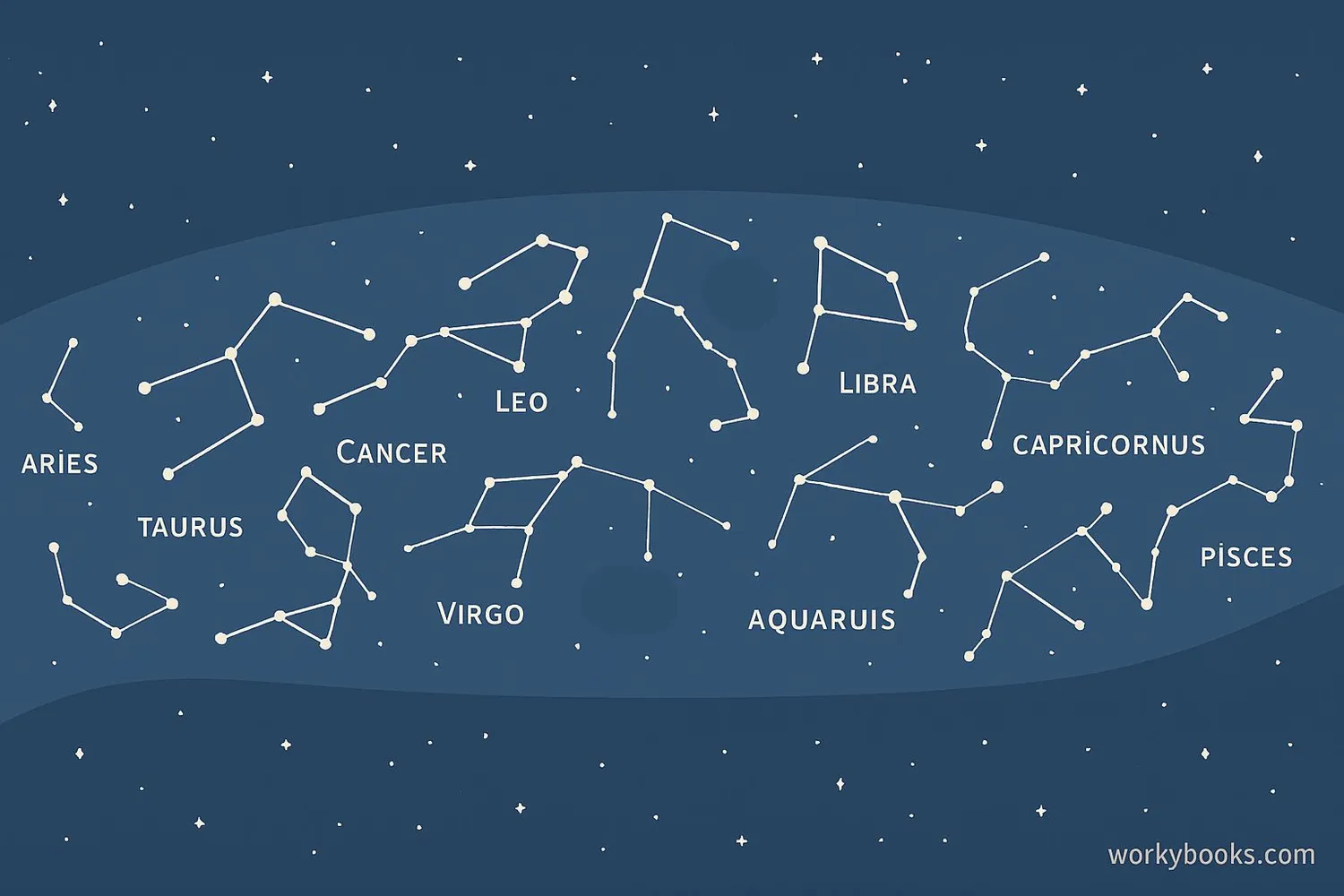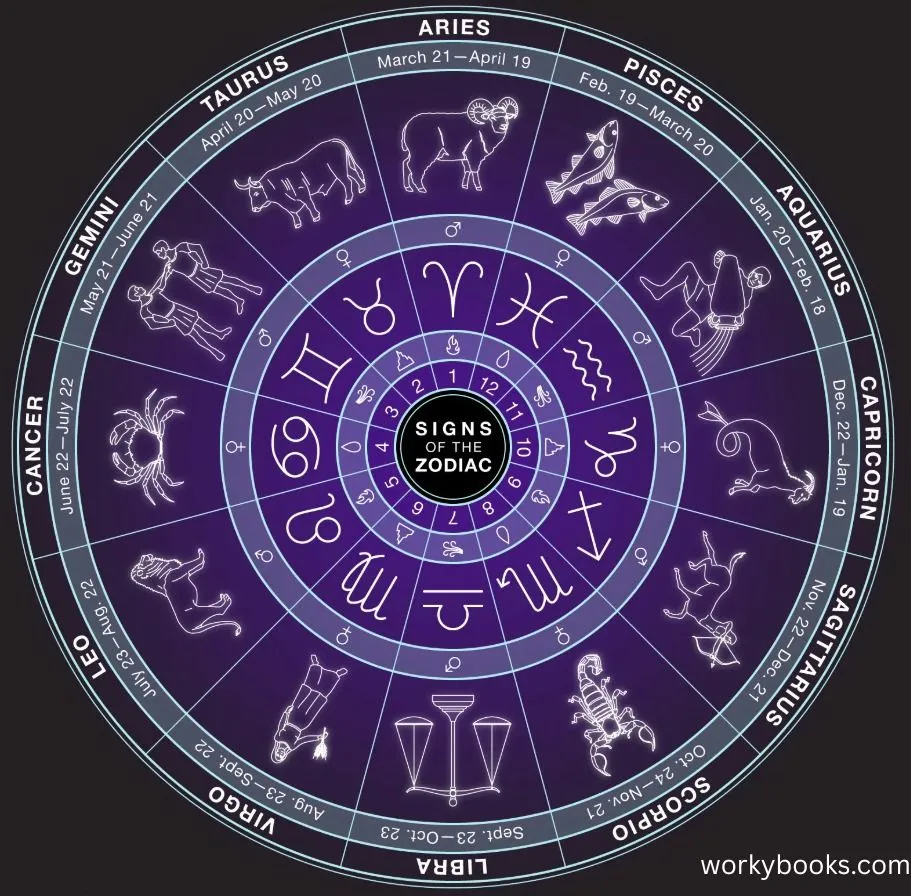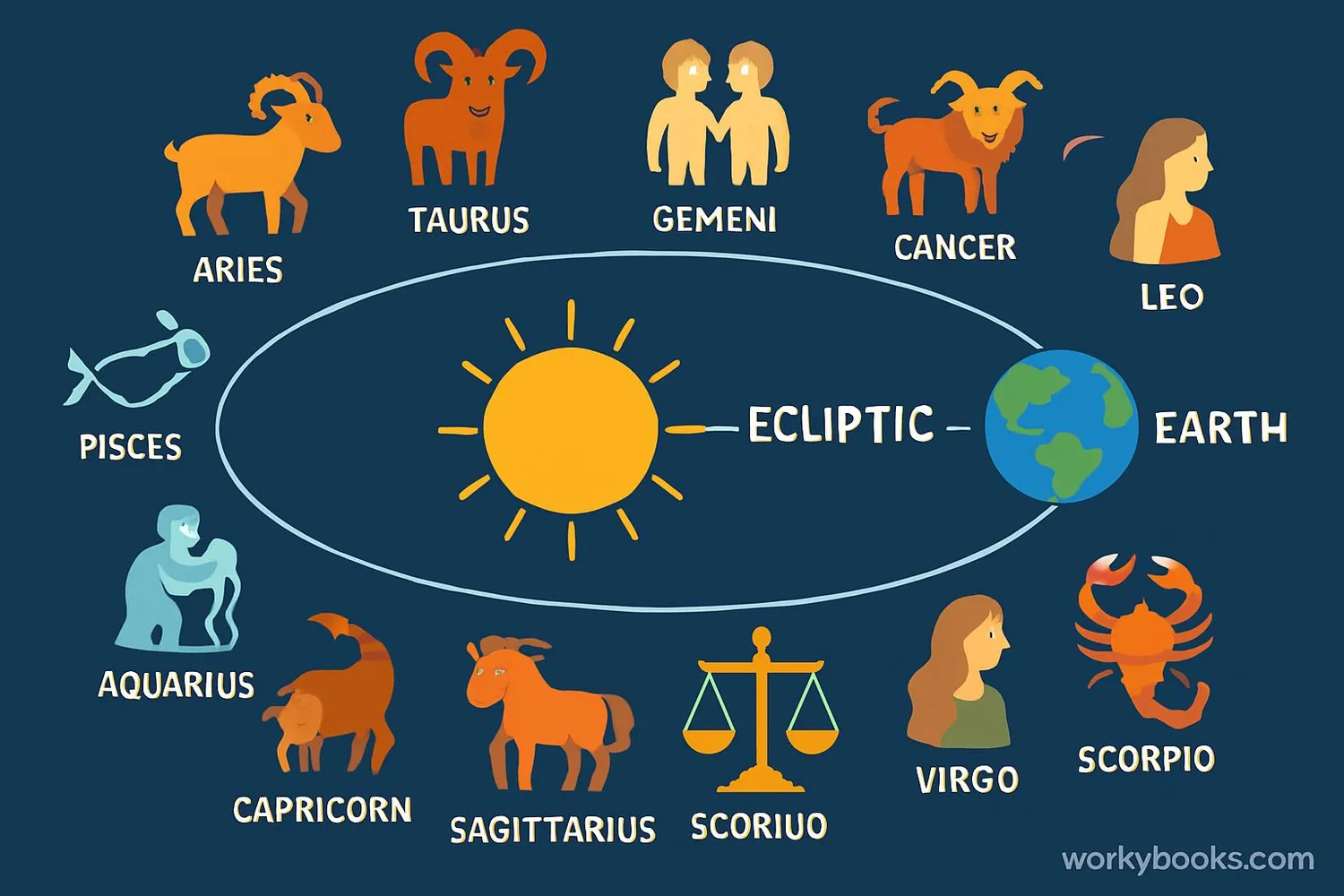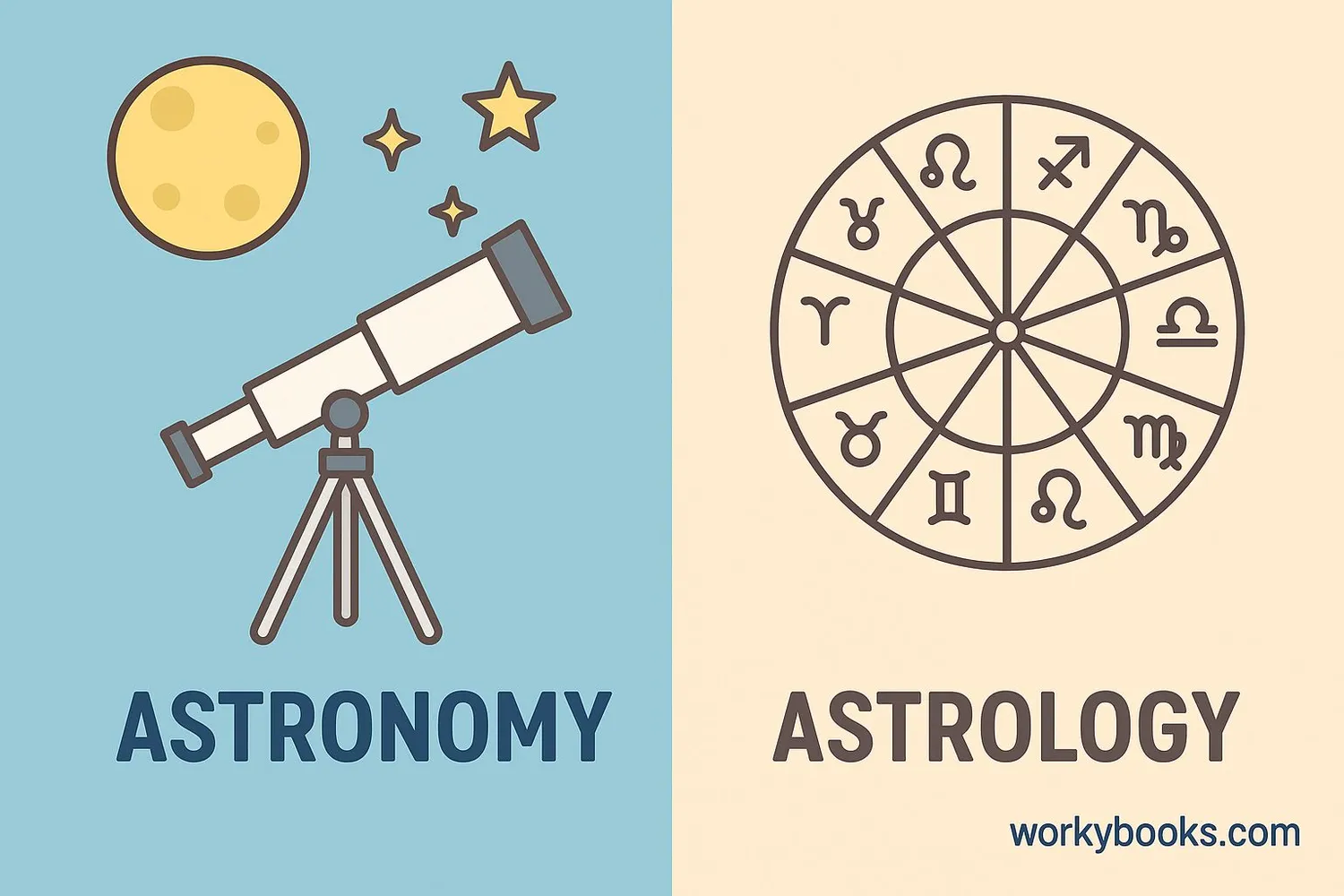Zodiac Constellations - Definition, Examples, Quiz, FAQ, Trivia
Discover the star patterns that form the zodiac and their place in astronomy
What are Zodiac Constellations?

Zodiac constellations are special star patterns that form a belt around our sky. The word "zodiac" comes from the Greek word for "circle of animals" because many of these constellations represent animals or mythological creatures.
These constellations are important in astronomy because they lie along the ecliptic - the path that the Sun appears to follow across our sky throughout the year. As Earth orbits the Sun, different zodiac constellations appear behind the Sun each month.
Did you know?
There are actually 13 constellations along the ecliptic, but ancient astronomers divided the sky into 12 equal parts, so we usually talk about 12 zodiac signs!
The 12 Zodiac Signs

The traditional zodiac consists of 12 constellations that the Sun appears to pass through during the year. Each has its own symbol, dates, and characteristics in astrology. Here are all 12 signs:
Aries
Taurus
Gemini
Cancer
Leo
Virgo
Libra
Scorpio
Sagittarius
Capricorn
Aquarius
Pisces
In astronomy, these are actual star patterns we can observe. In astrology, they're associated with personality traits, but scientists have shown that the positions of stars don't actually influence our personalities or futures.
The Ecliptic Path

The ecliptic is the apparent path that the Sun takes across our sky over the course of a year. This path is actually the plane of Earth's orbit around the Sun, projected onto the celestial sphere.
The zodiac constellations lie along this ecliptic path. As Earth orbits the Sun, different constellations appear to be "behind" the Sun from our perspective. This is why we associate different zodiac signs with different months.
Earth's Orbit
Earth orbits the Sun in a nearly flat plane
Ecliptic Projection
This orbital plane projected onto the sky creates the ecliptic
Zodiac Position
Zodiac constellations lie along this ecliptic path
Sun's Apparent Path
The Sun appears to move through these constellations throughout the year
Why the dates don't match
The dates we use for zodiac signs were established over 2000 years ago! Since then, Earth's axis has slowly shifted in a process called precession, so the Sun is actually in different constellations now than it was in ancient times.
Astronomy vs Astrology

While both deal with the stars, astronomy and astrology are very different:
Astronomy
Scientific study of celestial objects using observation and evidence
Astrology
Belief system suggesting celestial bodies influence human affairs
Key differences:
• Astronomy is a science based on evidence and testing
• Astrology is not considered scientific by modern standards
• Astronomers study the actual physical properties of stars and planets
• Astrology uses symbolic meanings and interpretations
While astrology can be interesting culturally, it's important to understand that there's no scientific evidence that the positions of stars and planets affect our personalities or lives.
Zodiac Constellations Quiz
Test what you've learned about zodiac constellations with this quiz!
Frequently Asked Questions
Here are answers to common questions about zodiac constellations:
Star Trivia
Discover some amazing facts about zodiac constellations!
Ancient Origins
The zodiac constellations were first defined by Babylonian astronomers around 500 BCE. They divided the ecliptic into 12 equal parts, each 30 degrees wide.
Earth's Wobble
Due to Earth's axial precession (a slow wobble), the zodiac constellations have shifted about one sign every 2,000 years. This means your "astrological" sign is likely wrong!
Size Differences
Zodiac constellations vary greatly in size. Virgo is the largest, covering 1,294 square degrees, while Cancer is the smallest at just 506 square degrees.
Sun's Journey
The Sun spends different amounts of time in each zodiac constellation. It spends only 7 days in Scorpius but 44 days in Virgo due to the constellations' different sizes.


